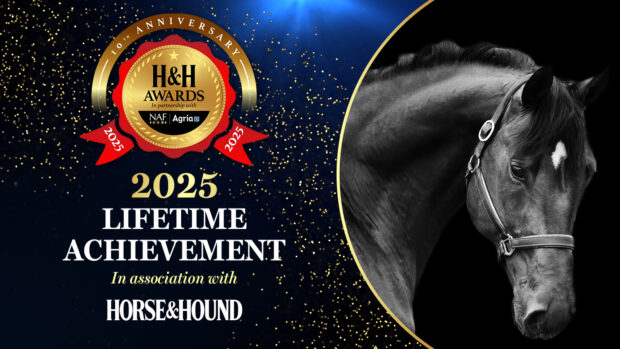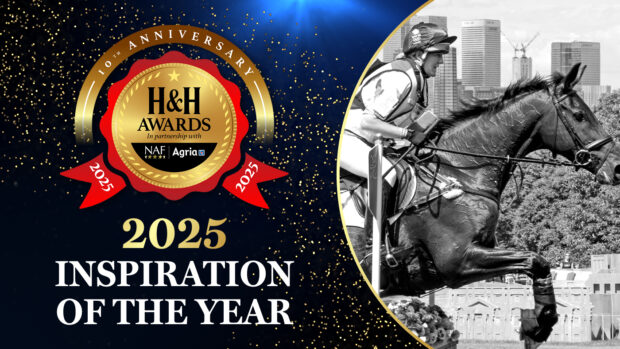Although most conditions like colic, heaves, mud fever etc, are not dependent on the specific breed or type of equine involved, there are a number of conditions that are more common in certain breeds or types. Furthermore, there are a handful of problems that only occur within one breed (breed-specific conditions).
Conditions that show a breed predisposition tend to fall into one of two categories, although there may be a degree of overlap between the two.
Acquired problems
There are a number of musculoskeletal problems affecting long-term soundness that tend to crop up more regularly among certain breeds – although other influencing factors can be involved.
Conditions of the lower limb that are brought on partly by concussion (such as sidebone and ringbone) are most frequently seen in cob types. These animals traditionally have short, upright pasterns and a rounded action, which results in their feet “slapping down”. Many are also used for driving – which frequently involves increased levels of work on roads – and they tend to carry plenty of condition. All these factors increase the amount of concussion to the limbs.
Conversely, Thoroughbreds are prone to flat feet, low heels, and long, sloping pasterns. This can result in problems associated with heel pain or navicular syndrome, and the majority of serious tendon injuries are seen in this type of animal.
A well-documented breed predisposition involves laminitis and the frequency with which it affects ponies (especially natives) as opposed to horses. This appears to be due in part to their metabolism, which is naturally more efficient. Recent work has also revealed an inherent insensitivity to insulin in ponies, which increases their susceptibility to the classic “carbohydrate overload” form of laminitis.
There are also a number of problems, not directly related to soundness, which some horses are particularly prone to because of their breed characteristics.
Heavy horses tend to suffer more from itchy chorioptic mange than finer breeds, simply because of the excessive feathering on their lower limbs (which mites love).
And Welsh Mountain ponies are especially prone to “weepy eyes”. This is because their particular large and prominent eyes makes them increasingly susceptible to environmental irritants, and because the excessive dishing of their face can result in frequent and sometimes permanent blockage of the delicate tear ducts. The shape of the Welsh head can also lead to dental problems.
Genetically linked conditions
There is a fairly extensive list of genetically linked problems, some so well established within the breed that they are almost in danger of being considered a normal characteristic. Many inheritable problems pose only a mild threat to health, whereas others have the potential to be fatal.
Some breeds seem to attract more than their fair share, and the Arab is a prime example. Conditions that show a predilection for the Arab include:
- Severe combined immune deficiency: extreme suppression of the immune system at birth, with fatal consequences
- Occipito-atlantoaxial malformation, leading to an abnormally shaped neck and a variety of gait problems
- Arabian foaling syndrome (pinky syndrome/vitiligo): irregular areas of depigmentation on head or body
- Lavender foaling syndrome: foals born a “mauve” colour with various fatal bodily defects
- Cerebellar degeneration: deterioration of parts of the brain leading to varying degrees of abnormal behaviour
Although such a list of potential dangers can appear alarming, it should be remembered that the Arab is a hugely popular animal whose delicate appearance belies an underlying toughness, and that these problems are still relatively rare.
Breed-specific problems
There are very few totally breed-specific conditions, as such problems tend to be self-limiting and are bred out almost as soon as they appear. Fell Pony Syndrome is a classic example, whereby a suspected recessive genetic defect leads to a deficiency in the immune system of young foals. Such foals appear fine at birth but develop problems after a couple of weeks (eg anaemia, coughing and diarrhoea), and most fail to survive. A group eradication scheme aims to identify the carrier animals and restrict breeding only to non-carrying stallions.
Indescriminate breeding over the years has enabled some genetically linked problems to become widely established. However, blood tests, involving DNA typing, can be carried out to ascertain the risks associated with breeding from certain lines so that potentially fatal conditions can be selectively bred out. In order to prevent the current situation from deteriorating, health and soundness must always be a priority when planning breeding.
Musculoskeletal conditions that show a breed predisposition
- Bucked shins (stress fractures to the front of the cannon bone): young Thoroughbreds and Quarter Horses in training
- Navicular disease complex: Quarter Horses, European warmbloods, Throughbreds — linked with breed foot shape (Arabs show a particularly low incidence)
- Upward fixation of the patella (locked stifle): Shetlands
- OCD (osteochondritis dissecans, the abnormal development of articular cartilage at certain joints): young, early developing horses, specifically warmbloods
- Wobbler syndrome (malformation and/or malalignment of the cervical vertebrae leading to gait problems in the hind limbs): young, rapidly growing horses again, especially warmbloods and Thoroughbreds
Other conditions with a genetic trait
- Laryngeal paralysis (roaring or whistling): Thoroughbreds
- Nuclear cataracts in eyes: Morgans
- Undershot jaw (sow mouth): miniatures
- Epidermolysis bullosa (excessive blister formation of the skin): Belgian Warmbloods
- Hypotrichosis and mane and tail dystrophy (excessive permanent thinning of hair on body, mane or tail): Arabs and Appaloosas
- Lethal white foal syndrome (foals born with fatal gastrointestinal defects): Pintos and true Albinos
- Appaloosa parentage syndrome (hair and skin colour fading progressively with age): Appaloosa cross-bred foals
|
||
 |
||


 Get up to 19 issues FREE
Get up to 19 issues FREE TO SUBSCRIBE
TO SUBSCRIBE 


